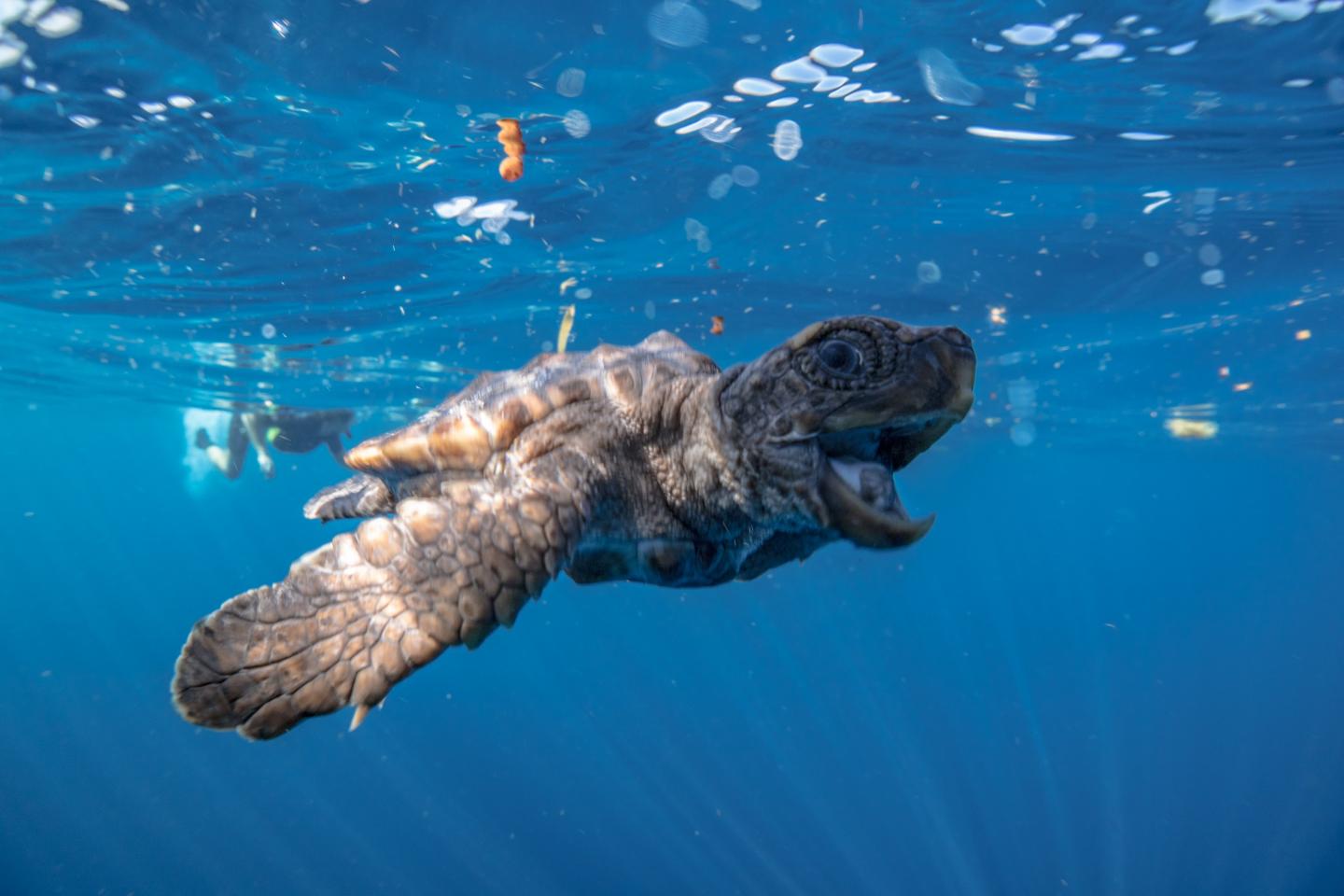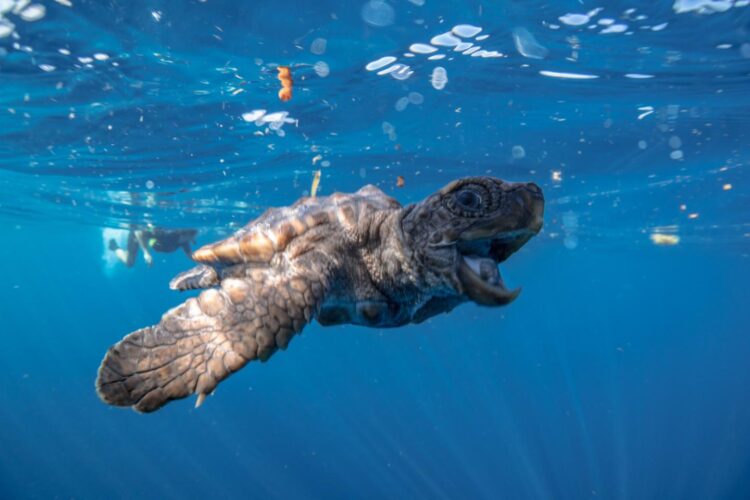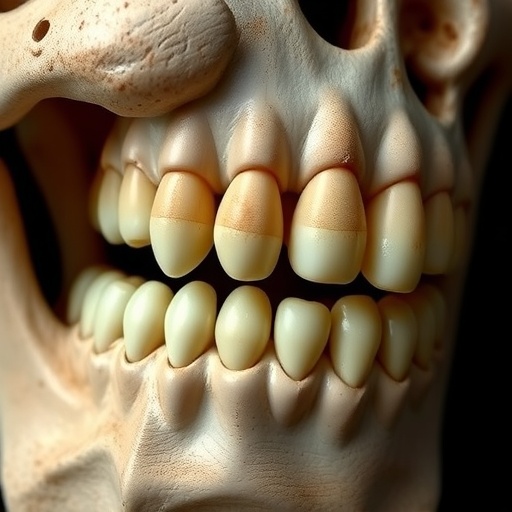Study provides crucial step to assess climate change impacts on imperiled turtle species

Credit: Dana Ralph
Unlike humans, sea turtles and other reptiles like crocodiles do not have sex chromosomes. Their sex is defined during development by the incubation environment. In sea turtles, sex is determined by the nest’s temperature: warmer temperatures produce females and cooler temperatures produce males. It is especially challenging to identify the sex of hatchling sea turtles because they lack external sexual organs and heteromorphic sex chromosomes — no X or Y. To date, there are a limited number of ways to reliably identify sex in turtle hatchlings. With the rapid increase of global temperatures, there is an urgent need to clearly assess sex ratios in these imperiled animals.
Researchers from Florida Atlantic University’s Charles E. Schmidt College of Science have developed a first-of-its-kind technique that is minimally invasive and greatly enhances the ability to measure neonate turtle sex ratios at population levels across nesting sites worldwide. They used this technique to identify sex in neonates of two turtle species: a freshwater turtle (Trachemys scripta) and a marine turtle (Caretta caretta) using analysis of small blood samples. This is the first time that differences in sex-specific protein expression patterns have been identified in blood samples of hatchlings with temperature-dependent sex determination. This research is a crucial step in assessing the impact of climate change on imperiled turtle species.
For the study, published in Scientific Reports, researchers used an immunoassay approach to test samples for the presence of several proteins known to play an important role in sex differentiation. Results of the study showed that anti-müllerian hormone (AMH) can reliably be detected in blood samples from neonate male turtles but not females and can be used as a sex-specific marker.
Researchers verified the sex of the turtles using histology or laparoscopy, which revealed that the new method they developed is 100 percent reliable for identifying sex in both the freshwater turtle and the loggerhead sea turtle in 1- to 2-day-old hatchlings and was 90 percent reliable for identifying sex in 83- to 177-day-old (120 – 160g) loggerhead juveniles.
“The challenges inherent in the methods that are currently being used to identify the sex of neonate turtles with temperature-dependent sex determination is what inspired us to look for an alternative approach,” said Jeanette Wyneken, Ph.D., co-author and a professor of biological sciences in FAU’s Charles E. Schmidt College of Science. “Results from our study provide the field of reptile conservation, and in particular, turtle conservation and management, with a valuable new tool that can be used to accurately assess the sex ratios of hatchlings.”
In comparison to the current molecular methods for sex identification in turtles with temperature-dependent sex differentiation, the approach developed by FAU researchers using blood samples via western blot analysis is quick, minimally invasive (requires a very small volume of blood), and the hatchling turtle can then be released immediately.
“Information from our study should enable other scientists and managers to precisely monitor changes in sex ratios that might arise as a consequence of changes in temperature over time,” said Boris Tezak, Ph.D., senior author who conducted the research as part of his Ph.D. studies at FAU and is now a post-doctoral researcher at Duke University Medical Center. “It also will help them to estimate how climate change will affect future generations of hatchlings, and allow for expedited evaluation of management strategies used to help recover imperiled sea turtles and other reptile species with temperature-dependent sex determination.”
Identifying natural turtle hatchling sex ratios at nesting sites is challenging for a variety of reasons, spanning morphological limitations to ethical issues to a lack of understanding of the mechanisms that actually direct embryonic sexual differentiation. Generally, turtles are characterized by being long-lived and late-maturing, so they are not sexually dimorphic until approaching sexual maturity – marine turtle species often take more than 25 years to become sexually mature.
“Due to the difficulties associated with readily identifying hatchling sex, most large-scale studies investigating turtle hatchling sex ratios rely on proxies to infer sex ratios indirectly such as nest temperatures, air temperatures or nest incubation durations,” said Itzel Sifuentes-Romero, Ph.D., co-author, a post-doctoral fellow of biological sciences in FAU’s Charles E. Schmidt College of Science, and a post-doctoral fellow of FAU’s Brain Institute (I-Brain). “However, these alternatives often fail to match the primary sex ratios from natural turtle nests or rookeries. We believe that the novel technique we have developed will allow for more accurate estimates of hatchling sex ratios at a population level and on a global scale.”
###
Sarah Milton, Ph.D., interim chair and a professor of biological sciences in FAU’s Charles E. Schmidt College of Science, also is a co-author of the study.
This research was funded by a Florida Sea Turtle License Plate Grant, the National Save the Sea The Foundation and the Nelligan Sea Turtle Fund.
About Florida Atlantic University:
Florida Atlantic University, established in 1961, officially opened its doors in 1964 as the fifth public university in Florida. Today, the University, with an annual economic impact of $6.3 billion, serves more than 30,000 undergraduate and graduate students at sites throughout its six-county service region in southeast Florida. FAU’s world-class teaching and research faculty serves students through 10 colleges: the Dorothy F. Schmidt College of Arts and Letters, the College of Business, the College for Design and Social Inquiry, the College of Education, the College of Engineering and Computer Science, the Graduate College, the Harriet L. Wilkes Honors College, the Charles E. Schmidt College of Medicine, the Christine E. Lynn College of Nursing and the Charles E. Schmidt College of Science. FAU is ranked as a High Research Activity institution by the Carnegie Foundation for the Advancement of Teaching. The University is placing special focus on the rapid development of critical areas that form the basis of its strategic plan: Healthy aging, biotech, coastal and marine issues, neuroscience, regenerative medicine, informatics, lifespan and the environment. These areas provide opportunities for faculty and students to build upon FAU’s existing strengths in research and scholarship. For more information, visit fau.edu.
Media Contact
Gisele Galoustian
[email protected]
Related Journal Article
http://dx.





